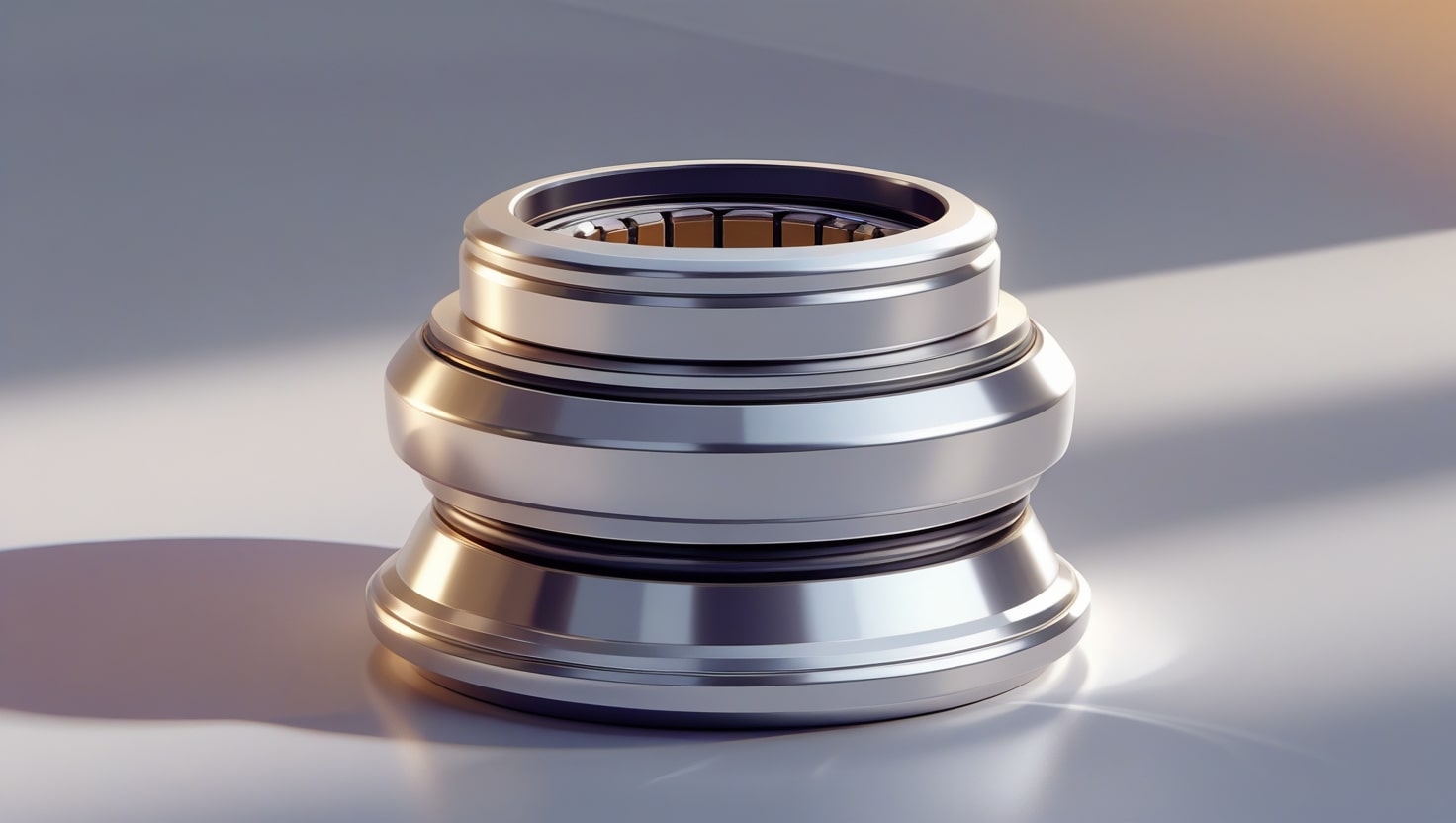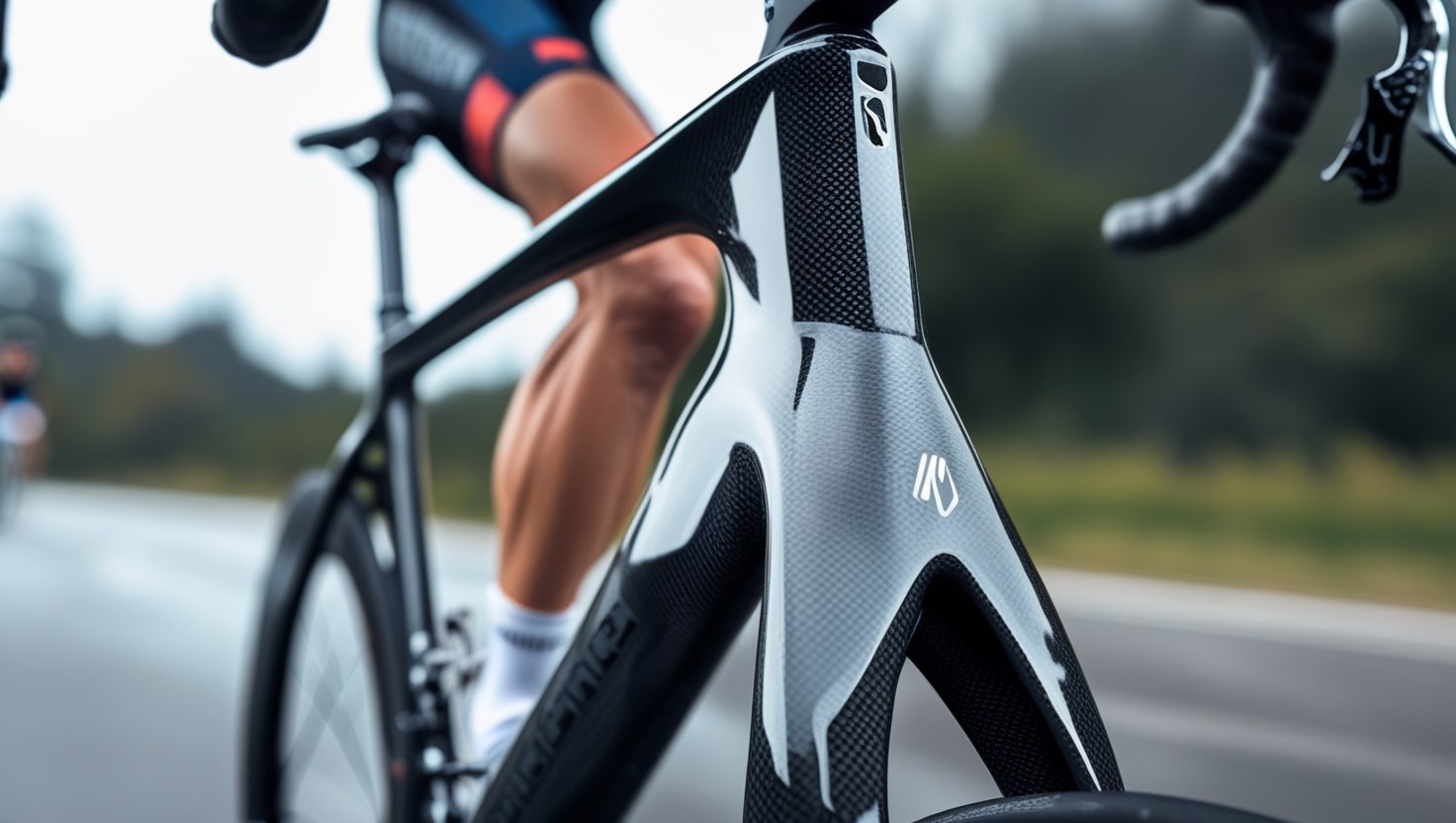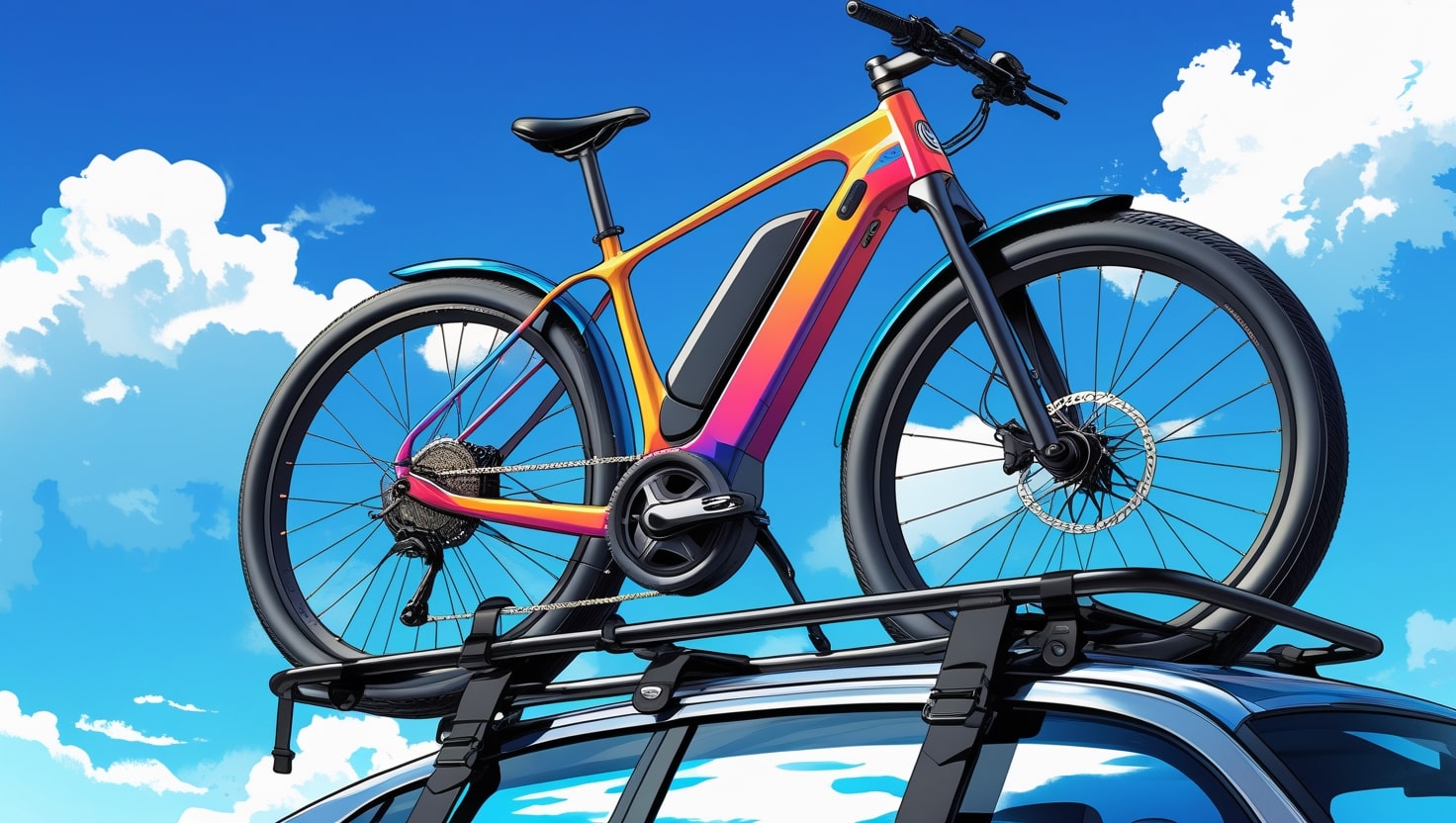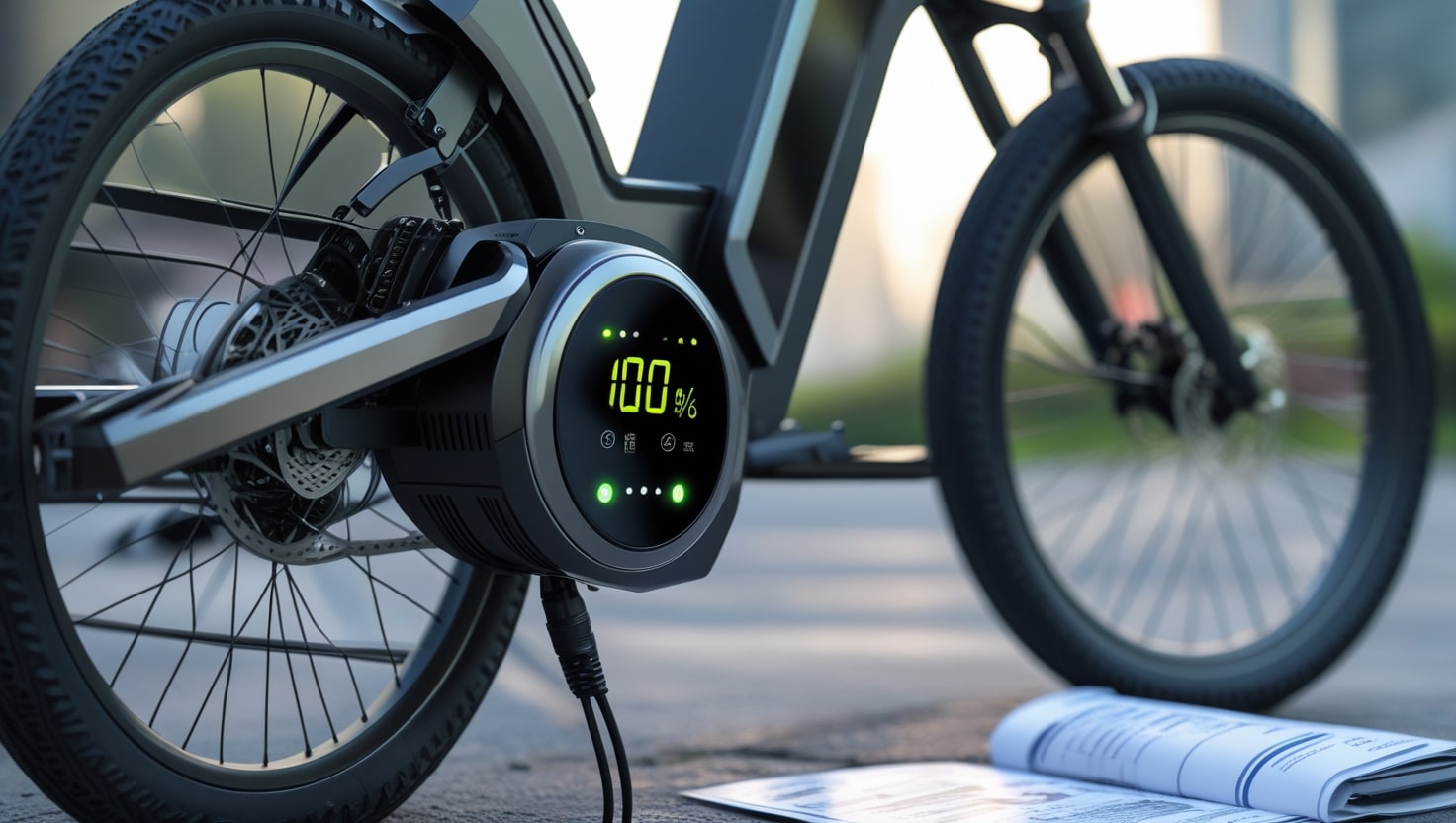An essential component of a bicycle is the headset, which joins the head tube and fork to enable simple handlebar turning. It also fits between the upper head tube and the stem, as well as between the fork crown and the lower portion of the head tube.
While many types of headsets exist, they all serve the same basic purpose: keeping the fork in place so that the bike can function correctly. There are many different types of headsets, so you need to know which one your bike uses when it’s time for a replacement. This guide will help you understand how to identify, buy, and replace your headset. Grips on the bike are key to a comfortable ride, so knowing what is a headset on a bike is crucial for maintenance.
What are the parts of a headset and how do they work?
A headset is a crucial component of your bike, and it consists of several parts that help it function properly. The two main bearings sit at either end of the head tube. Two important bearings are located at each end of the head tube. These bearings are held firmly in place within the frame by either an integrated assembly or a bearing cup. A crown race at the bottom of the steerer guarantees proper alignment and smooth fork movement, while the fork fits into the steerer tube, which attaches to the lower bearing. The top race supports the upper bearing in a similar manner.
The bearings are designed to handle different types of loads. The lower bearing mainly carries the axial load during riding, as it’s directly supporting the fork. The upper bearing only supports the preload force applied to keep the fork in place. Modern bikes often use cartridge bearings, which are sealed units that contain all the bearing balls inside them, making the system more reliable. These bearings are mounted into a mating surface or seat, ensuring smooth performance.
Preloading the bearings aids in securing every component, avoiding unwelcome play or movement in the steerer tube while facilitating easy fork rotation. The combination of these parts, including the bearings, crown race, and top race, ensures that the headset functions smoothly, even under the pressures of different riding conditions.
What type of headset do I have on my bike?
What is a threaded headset?
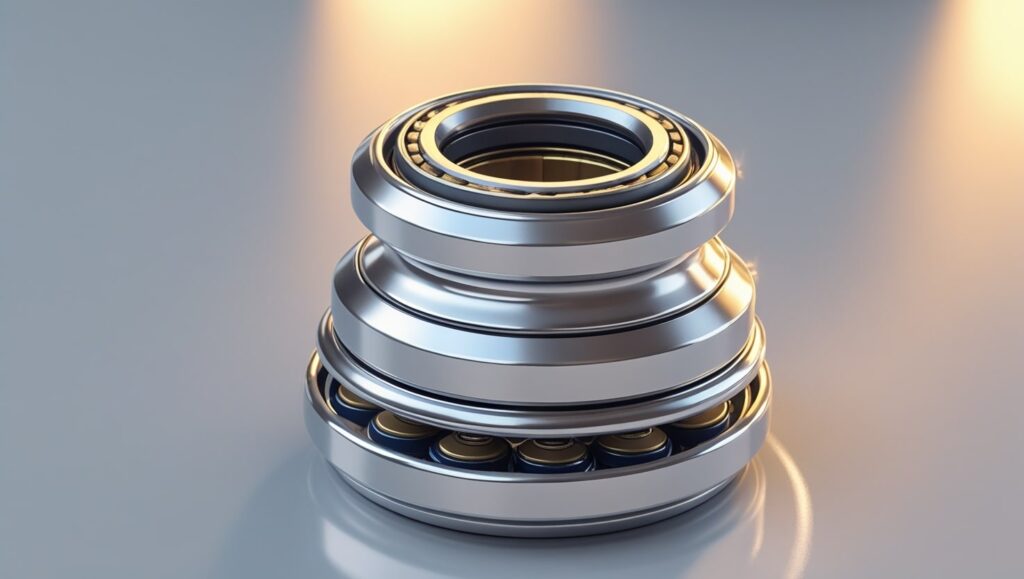
A threaded headset is a type of headset commonly found on older or more basic bikes, such as budget bikes, track bikes, touring bikes, and retro builds. The cups that hold the bearings in this configuration are positioned in the head tube’s top and bottom ends. The bearing assembly ends at the head tube’s bottom end, where a race is installed on the fork crown. The threaded race is fastened to the top of the fork to firmly push on the upper bearing. The threaded race is part of the steerer tube of the fork.
The top of the headset includes a bearing cap with seals that protect the bearings from dirt and moisture. The cap is tightened to change headset preload, and the fork is held firmly in place by a locknut. When the top bolt is tightened, a wedge that expands downward to lock the stem firmly in place is activated. The stem, which is often a coil stem, fits inside the steerer tube.
The requirement for exact fork installation, because the fork must precisely match the frame’s head tube length, is one drawback of a threaded headset. The threads on the locknut must align correctly to avoid any issues, such as the locknut bottoming out on the top of the steerer tube. Additionally, adjusting a threaded headset requires specific spanners designed for the large dimensions of the threaded race and locknut, which might not be practical to carry during rides.
Although threaded headsets have been largely replaced by threadless designs due to their weight and complexity, they are experiencing a resurgence in the custom-bike market, driven by nostalgia for their elegant lines and unique design. Some bike enthusiasts still appreciate the charm and history behind threaded headsets, which are often found in retro and vintage bicycles.
What is a threadless / A-headset?
A threadless headset is a modern and simpler design commonly used on most bikes today. Unlike older threaded headsets, this system does not require threading in the steerer tube. Instead, the stem is clamped to the outside of the steerer tube. This makes service much easier since you only need standard tools like hex keys or Torx keys to maintain or adjust the headset. A crown race sits at the base of the steerer tube, and the bearings are installed at the top and bottom of the head tube.
One key part of the threadless headset is the top cap, which helps to apply preload to the headset. A star nut or bung is used inside the steerer tube to ensure everything stays tightly in place. The preload force is crucial because it prevents any movement or slop in the headset. Preload is applied through the top cap, which pulls the steerer tube up, ensuring a solid connection between the fork and bearings.
For bikes with carbon forks or carbon steerers, a special expander (or bung) is used instead of a star nut. The expander helps to distribute the load evenly inside the steerer tube, reducing the risk of crush injuries to the carbon steerer. It provides solid support for the fork, ensuring that the stem can be clamped properly without damaging the steerer.
Another crucial component of the system is the compression ring. When preload is applied, it helps tighten the headset by fitting between the top bearing and the steerer tube. This compression ring ensures that the bearings remain in place, preventing any unwanted movement. The top bearing interfaces with the compression ring, which gets wedged tightly, providing stability to the entire assembly.
Although threadless headsets come in a variety of forms, they all operate on the same fundamental idea. The primary difference is in how the bearings are fitted into the frame. High-end headsets often feature additional components, like sealed bearings or special headset caps, to protect the headset from dirt and moisture, improving performance and longevity.
What is an external threadless headset?

An external threadless headset is a type of headset design where bearings sit inside external bearing cups that are pressed into the top and bottom of the head tube. These bearing cups hold the bearings in place, and the bearings fit snugly inside their seat, often using a transition fit. The conical interface between the bearing and the cup helps secure the bearings when preload is applied, ensuring a stable connection. This design allows for smooth fork rotation and secure handling.
In some cases, manufacturers like Chris King choose to press-fit the bearings directly inside the headset cups for added security. This approach prevents any movement of the bearings, though it means that the bearings cannot be easily removed for servicing. Instead, they need to be cleaned and serviced in situ, keeping the headset in good condition without needing to replace the bearings too frequently.
What is an internal / semi-integrated headset?
The bearings of an internal or semi-integrated headset are positioned inside the head tube as opposed to outside of it. The cups that hold the bearings sit inside the head tube with only a small lip to help locate and prevent the cup from being pressed too far inside. The head tube has a wider diameter to accommodate the bearings, which also increases the frame’s rigidity in that location. The overall strength and performance of the bike’s front end are enhanced by this design.
What is an integrated headset?
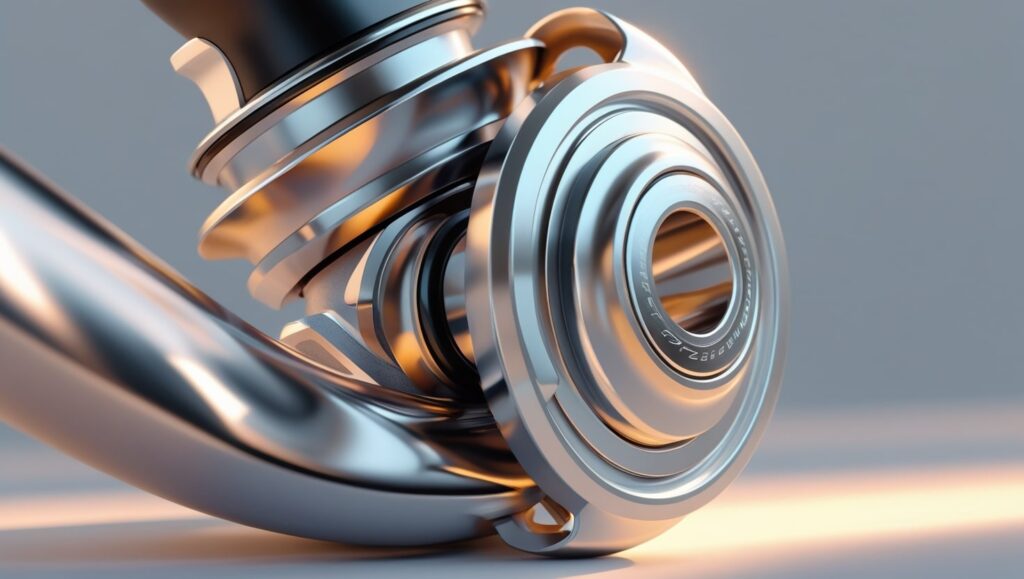
An integrated headset is a modern design that eliminates the need for bearing cups. Rather, the bearings are inserted straight into the head tube’s pre-formed seats. These seats are conically shaped, which helps the bearings self-align when preload is applied, creating a rigid assembly. This system is often seen as a cost-saving measure because the bearings are simply dropped in during assembly, eliminating the need to press-fit bearing cups like those used in other components, such as press-fit bottom brackets.
The head tube is bored to create these conical seats, and the bores must be machined concentrically and aligned along the same axis to ensure a good fit. The standard angle for the conical bore is 45 degrees, while 36 degrees is now considered obsolete, although it can still be found on some older frames. The seats may also be square, and in such cases, inserts can be pressed in to provide the correct contact angle.
An integrated headset design is so versatile that it could even be adapted to threaded headsets, using the zero stack method, which helps accommodate different frame types and designs while ensuring optimal performance.
Mixing headset standards
Some head tubes combine different designs to create a unique setup. For example, the head tube may have a semi-integrated design at the top and an external cup at the bottom.
What is a crown race?
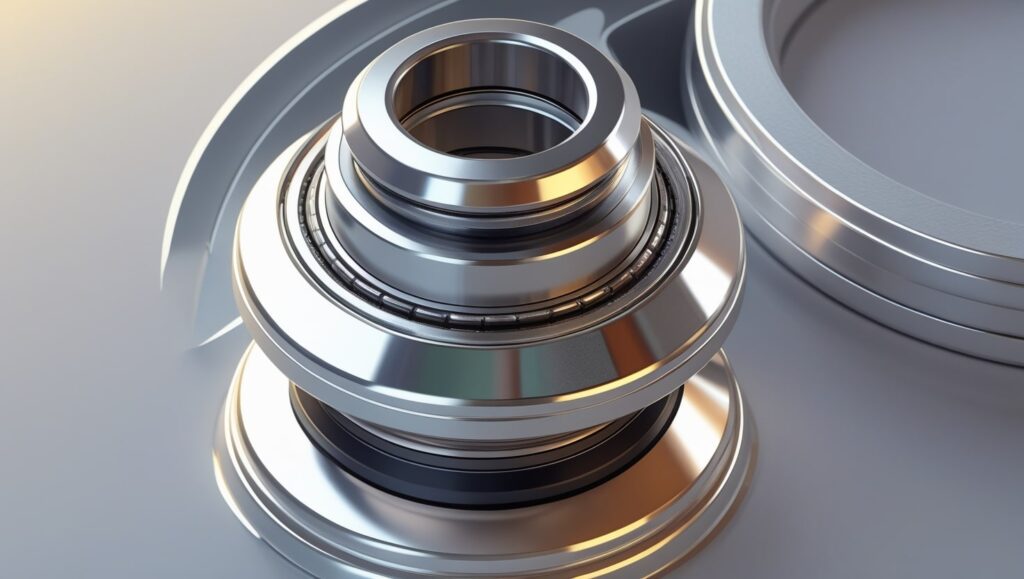
Located at the fork’s crown and acting as the bearing’s contact surface, the crown race is an essential component of the headset assembly. The crown race provided a sturdy, precisely machined surface for the balls to rotate on because sloppy ball bearings were typical in earlier configurations. However, with the rise of cartridge bearings, the crown race is now seen more as a seat for the bearing, as the races are integral to the bearing itself.
Crown races come in various headset-specific designs, with different dimensions and variations in their interface with the bearings. This means when swapping or upgrading a headset, you may need to change the crown race to match the new components. Some systems now feature split crown races, which make installation easier, as they can be slotted to adjust the fit during installation or removal.
An integrated crown race design has also emerged, which uses softer materials, like carbon fibre, for the race. This is made possible because the load is spread by the outer seat of the bearing, unlike the earlier design where hard bearing balls rolled directly on the surface. These integrated crown races are shaped to fit precisely with the steerer tube and typically come in two angles: 36 degrees or 45 degrees, allowing for more flexibility in headset designs.
What are the common steerer diameters?
The steerer diameter refers to the size of the steerer tube on a bike, and there are several standard sizes. 1 inch, 1 1/8 inch, 1.25 inch, and 1.5 inch are the most widely used dimensions. Although 1 1/8 inch is by far the most popular size, 1 inch steerers can occasionally be found in threaded steerers. Tapered steerer tubes, which combine a larger lower section and a smaller top section, are increasingly used on modern bikes, especially for mountain bikes and road bikes. These tubes provide a better balance of steering stiffness and reduced weight.
The crown of the fork also plays a key role, with tapered steerer tubes offering a wider crown for improved stiffness. The tapered top section helps save weight, making it a popular choice for frame design. The frustum shape of the head tube allows for optimization of the bike’s stiffness and comfort by connecting with the down tube. This design enhances the surface area and provides more strength in the lower section, while the top tube stays slim to reduce weight and improve riding comfort.
Overall, the choice of steerer diameter is essential for ensuring that the bike performs well in terms of steering, stability, and comfort, with each diameter offering different benefits depending on the bike’s intended use.
SHIS Standards: ZS, IS, EC. What does it all mean?
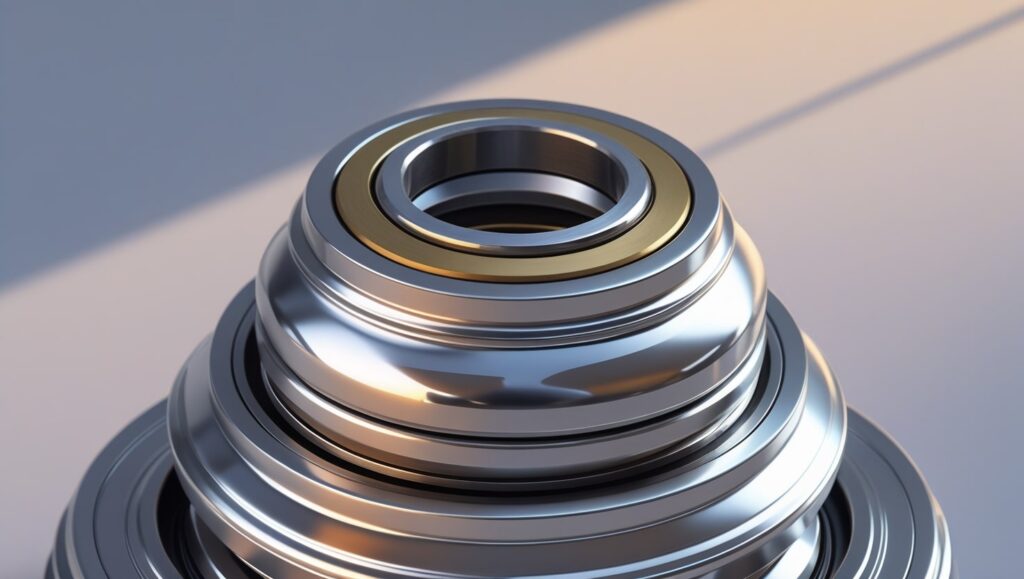
When you’re looking at headsets, it can be tricky to navigate the variety of parts and names used by different brands. Thankfully, the SHIS (Standardized Headset Identification System) simplifies things by providing a clear system for identifying headset types and sizes.A two-letter designation is assigned to each type: IS denotes an integrated headset, ZS denotes an internal or zero-stack headset, and EC stands for external cup.
The SHIS system also includes a number that follows the type code. This figure, which is expressed in millimeters, represents the outside diameter of the bearing or cup or the head tube bore diameter. While the number doesn’t always match the exact dimensions of the bore, it serves as a code to help identify the specific head-tube diameter and find the right headset for your bike. This standard makes it easier to choose the right components when you’re shopping for a new headset.
SHIS for external cup (EC) headsets
| Common Title | SHIS Identifier | Internal Bore Size (mm) | External Cup Size (mm) |
|---|---|---|---|
| 1 in JIS | EC29 | 29.85 – 29.9 | 30 – 30.1 |
| 1 in Pro | EC30 | 30.05 – 30.1 | 30.2 – 30.3 |
| 1 in BMX | EC33 | 32.6 – 32.7 | 32.8 – 32.9 |
| 1-1/8 in external | EC34 | 33.9 – 33.95 | 34.05 – 34.15 |
| 1-1/4 in external | EC37 | 36.9 – 36.95 | 37.05 – 37.15 |
| 1.5 in external | EC44 | 43.95 – 44 | 44.1 – 44.15 |
| 1.5 in external | EC49 | 49.57 – 49.61 | 49.7 – 49.75 |
| 1.5 in external | EC56 | 55.9 – 55.95 | 56 – 56.05 |
SHIS for semi-integrated/zero-stack (ZS) headsets
| Standard Name | SHIS Code | Inner Bore Diameter (mm) | Outer Cup Diameter (mm) |
|---|
| 1 in semi-integrated | ZS41 | 41.35 – 41.4 | 41.45 – 41.5 |
| 1-1/8 in semi-integrated | ZS44 | 43.95 – 44 | 44.05 – 44.1 |
| 1-1/2 in semi-integrated | ZS49 | 49.57 – 49.61 | 49.7 – 49.75 |
| 1-1/2 in semi-integrated | ZS55 | 54.9 – 54.95 | 55.05 – 55.1 |
| 1-1/2 in semi-integrated | ZS56 | 55.9 – 55.95 | 56.05 – 56.1 |
SHIS for the steerer
| Common Name | SHIS Name | Steerer Diameter (mm) |
|---|---|---|
| 1 in French threaded | M25-1.0 | 25.0 |
| 1 in threaded (English, Italian, JIS, BMX etc.) | 25.4-24tpi | 25.4 |
| 1-1/8 in threaded | 28.6-26tpi | 28.6 |
| 1-1/4 in threaded | 31.8-26tpi | 31.8 |
| 1 in threadless | 25.4 | 25.4 |
| 1-1/8 in threadless | 28.6 | 28.6 |
| 1-1/4 in threadless | 31.8 | 31.8 |
| 1-1/2 in threadless | 38.1 | 38.1 |
SHIS for the crown race — common crown race standards
| Common Name | SHIS Name | Crown Seat Diameter (mm) |
|---|
| 1 in Pro | 26 | 26.43 – 26.49 |
| 1 in JIS | 27 | 27.03 – 27.09 |
| 1-1/8 in | 30 | 30.015 – 30.075 |
| 1-1/4 in | 33 | 33.03 – 33.09 |
| 1.5 in | 40 | 39.79 – 39.85 |
| Common Name | SHIS Name |
|---|---|
| 1-1/8 in Cane Creek standard | 30 (36) |
| 1-1/8 in Italian standard | 30 (45) |
| 1-1/4 in | 34 (45) |
| 1-3/8 in Cane Creek standard | 37 (36) |
| 1-3/8 in Taiwan standard | 37 (45) |
| 1.5 in 36-degree | 40 (36) |
| 1.5 in 45-degree | 40 (45) |
Special and unusual headsets

The SHIS code helps you find the right headset that will fit your bike, but there are also additional choices available. For instance, special-purpose headsets are gaining popularity, especially in mountain biking, as they can significantly change your ride. These headsets offer a cheaper way to tune your geometry, allowing you to customize your bike’s handling and performance.
Angle headset / AngleSet
The AngleSet headset, popularised by Cane Creek, allows you to tune the bike’s head angle for better performance. Instead of the typical setup where the steerer tube runs vertically through the head tube, the angled headset uses the spare space inside the frame to tilt the steerer by up to 2 degrees. This adjustment allows for a more customizable riding experience.
By slackening the head angle, you can achieve significant improvements in the handling of a mountain bike. This modification doesn’t affect the seat angle or bottom-bracket height, unlike with offset shock bushings, making it a great way to adjust bike geometry without compromising other key measurements.
Reach-adjust headset
By changing the steerer’s location, a reach-adjust headset lets you fine-tune your bike’s reach. Instead of changing the angle of the steerer, the entire steerer is offset within the head tube, giving you more flexibility in customizing your bike’s fit and geometry.
ViscoSet
One interesting headset is Cane Creek’s ViscoSet, which provides damped steering for a smoother ride. BikeRadar’s Jack Luke tested it and found that it relaxed the handling of his tandem bike and effectively stopped speed wobble. This makes it an excellent choice for riders seeking more stability, especially on high-speed rides.
What makes a quality headset?
When considering what makes a quality headset, it’s important to balance price and performance. While investing more money may improve the bearing quality and sealing, there’s a point of diminishing returns where spending extra doesn’t offer significant performance gains. Some manufacturers create overbuilt headsets designed for heavy-duty use, but for most mountain biking, this is often overkill, as suspension provides sufficient damping to absorb the forces on the headset.
What truly defines a quality headset is good sealing, which prevents dirt and water from affecting the components, as well as the availability of spare parts. If low weight is important to you, look for headsets that offer good sealing without adding unnecessary bulk.
All about bearings
When choosing a headset, the bearings play a crucial role in its overall quality and performance. While investing more money in a headset can improve the bearing quality and sealing, there’s a point of diminishing returns, meaning you won’t always get significant performance gains by spending more. High-end bearings often provide better durability and sealing, but for most riders, the additional cost might not always be worth it, especially if the headset is overbuilt for heavy-duty use.
For most mountain biking, the suspension already provides enough damping to manage the forces acting on the headset. When choosing a headset, it’s important to consider things like spare parts availability and low weight without compromising on the bearing’s ability to support load. Manufacturers tend to create more expensive models for performance, but it’s essential to match the headset to your needs without going overboard.
How to maintain and fix a headset
If your headset feels gritty or horrible, it’s probably time to service it and possibly replace the bearings. Start by removing the fork from the head tube and carefully check the bearings. They may need replacing, cleaning, or regreasing. The process is straightforward and doesn’t require many tools.
You should also regularly check for any play in the headset, which could indicate wear or a loose headset. To check, apply the front brake, and while holding the crown of the fork, rock the bike back and forth. If you hear any knocking or clunking noises or notice any movement of the fork in the steerer tube, check the headset for tightness. If the problem persists, some servicing is likely required.

